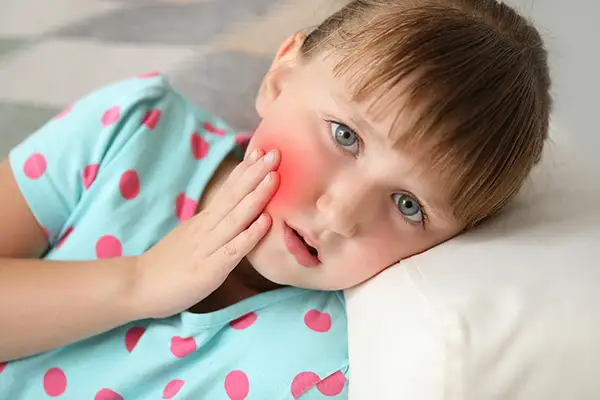Common Dental Injuries in Children and How to Address Them
 Every parent knows that childhood is full of bumps, tumbles, and unexpected surprises. Among these, dental injuries
are especially common, particularly during sports or playtime. Knowing how to respond to these emergencies can make all the difference in preserving your child’s smile and oral health. Every parent knows that childhood is full of bumps, tumbles, and unexpected surprises. Among these, dental injuries
are especially common, particularly during sports or playtime. Knowing how to respond to these emergencies can make all the difference in preserving your child’s smile and oral health.
Introduction to Dental Injuries in Children
Children are naturally active and curious, making them prone to accidents that result in dental injuries. Whether it's a slip on the playground or a collision during sports, these incidents are more common than you might think. Studies show that approximately 30% of children experience dental trauma before their teenage years.
Why are dental injuries so common in children?
- Children's teeth and jawbones are still developing, making them more vulnerable to damage.
- High-energy activities like running, climbing, and sports often lead to falls or collisions.
The importance of quick responses: Acting swiftly and appropriately can prevent complications and improve the chances of saving an injured tooth. For example, a knocked-out permanent tooth can be reimplanted if treated within one hour.
| • |
Example Scenario: A child falls off a bike and cracks their front tooth. Quick first aid and a visit to the dentist can restore the tooth’s appearance and function.
|
| • |
Statistic: Over 50% of dental injuries occur during recreational activities or sports, emphasizing the importance of protective measures. |
Types of Common Dental Injuries in Children
Understanding the type of injury is critical to determining the right course of action. Here are the most frequent dental injuries in children:
| • |
Chipped or Cracked Teeth - These injuries may cause sensitivity and expose the inner layers of the tooth.
|
| • |
Knocked-Out Teeth - A dental emergency where immediate action is needed to preserve the tooth.
|
| • |
Fractured Roots - Often invisible without X-rays, these injuries can affect the stability of a tooth.
|
| • |
Soft Tissue Injuries - Cuts or tears in the gums, lips, or cheeks, which may bleed significantly.
|
| • |
Intrusion Injuries - When a tooth is pushed into the jawbone, typically requiring professional intervention. |
Handling baby teeth vs. permanent teeth: Baby teeth injuries may not require the same urgency as permanent teeth, but professional evaluation is always recommended to avoid long-term issues.
Immediate Steps for Handling Dental Emergencies
When dental emergencies happen, knowing how to respond can prevent further damage and reduce pain. Here’s what to do for specific situations:
| • |
Chipped or Broken Teeth: Rinse the mouth with warm water, apply a cold compress to reduce swelling, and collect any tooth fragments for the dentist.
|
| • |
Knocked-Out Tooth: Handle the tooth by the crown, rinse gently without scrubbing, and place it in milk or saline solution. Seek dental care immediately.
|
| • |
Soft Tissue Injuries: Apply pressure to stop bleeding and clean the wound gently with water.
|
| • |
Pain and Bleeding: Over-the-counter pain relievers and gauze can help until professional care is available. |
Timing is crucial: A knocked-out permanent tooth has the best chance of being saved if reimplanted within one hour.
Professional Treatments for Dental Injuries
At Parkside Dental, our pediatric dentists are trained to handle a wide range of dental injuries with precision and care. Here's what you can expect:
| • |
Chipped or Cracked Teeth: Restorative options like bonding, veneers, or crowns restore appearance and function.
|
| • |
Knocked-Out Teeth: Reimplantation and stabilization using a dental splint.
|
| • |
Complex Injuries: Fractured roots and intrusion injuries often require advanced treatments like root canals or orthodontic repositioning.
|
| • |
Soft Tissue Injuries: Sutures or healing aids may be applied to ensure proper recovery. |
Follow-up care: Monitoring the injury is essential to detect any long-term complications, such as infection or developmental issues.
Prevention Tips for Dental Injuries
While accidents are inevitable, these tips can help reduce the risk of dental injuries in children:
| • |
Use Mouthguards: Protective gear is crucial for sports like basketball, soccer, and skateboarding.
|
| • |
Childproof Your Home: Install safety gates and remove tripping hazards to minimize fall risks.
|
| • |
Teach Safe Oral Habits: Encourage children to avoid using teeth as tools for opening packages or biting hard objects.
|
| • |
Regular Dental Checkups: Early detection of vulnerabilities can help prevent future injuries. |
Fun Fact: Mouthguards reduce the risk of dental trauma by 60% in contact sports!
FAQs About Children’s Dental Injuries
How do I know if a dental injury is serious?
Signs of a serious injury include severe pain, persistent bleeding, a loose tooth, or a tooth that appears discolored or out of place. If unsure, always contact a dentist for evaluation.
What should I do if my child swallows a tooth?
In most cases, a swallowed tooth will pass naturally through the digestive system. However, consult your child’s pediatrician to rule out complications.
How should I care for my child after a dental procedure?
Follow your dentist's instructions, including dietary restrictions, oral hygiene practices, and any prescribed medications. Monitor for signs of discomfort or infection.
What's Next?
Dental injuries in children are a common part of growing up, but with the right knowledge and preparation, parents can handle these situations effectively. Remember to take preventive steps, act quickly during emergencies, and seek professional care when needed.
Contact us today for any questions or to schedule an appointment!
|

 Every parent knows that childhood is full of bumps, tumbles, and unexpected surprises. Among these,
Every parent knows that childhood is full of bumps, tumbles, and unexpected surprises. Among these,